
Project 21
Role
Research and design
Timeline
2 weeks in Nov, 2020
Type
Individual project
Overview
The project idea originated from a hackathon prompt. My team and I developed a pill reminder app. Afterward, I conducted several user interviews to validate some of our initial assumptions. During this process, I discovered that my team had numerous misperceptions about mental illness and those affected by it. Based on my findings, I proposed a new solution...
Problem
How can we encourage people who struggle with mental health to reach out to mental health systems to get the help they need?
Solution
A platform attracts users with interesting psychology articles while having therapy services and additional mental health resources integrated into the app.
Decision 1
A platform NOT made to target people who struggle with mental health
After conducting user interviews and looking at existing solutions, I realized apps in the mental health categories are generally targeting a market that rejects them.
#1 Browsing
- A platform for users to proactively learn more about themselves and gain knowledge about psychology, instead of a reactive solution for "sick people".
- Provide quality articles written by verified psychologists that directly link to the author's profile.
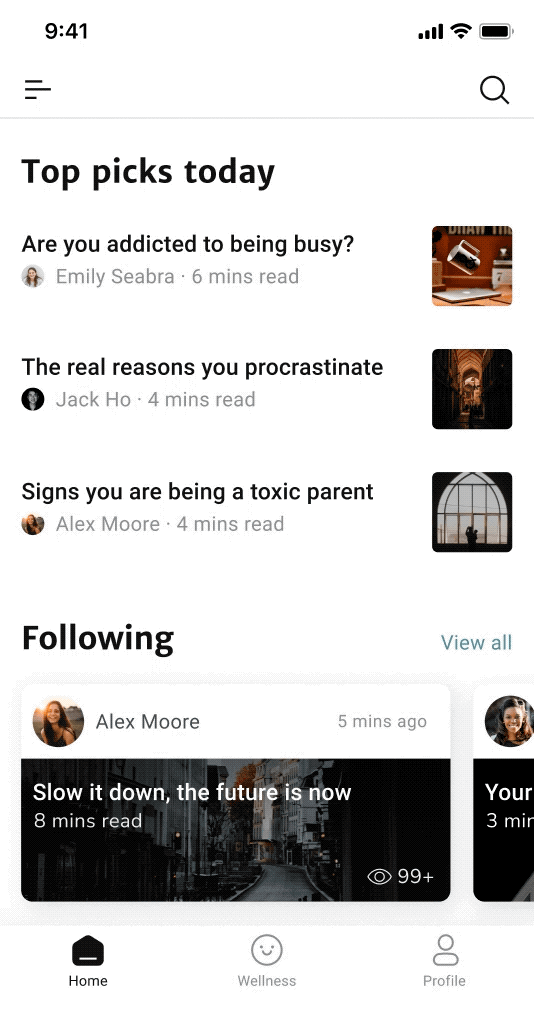
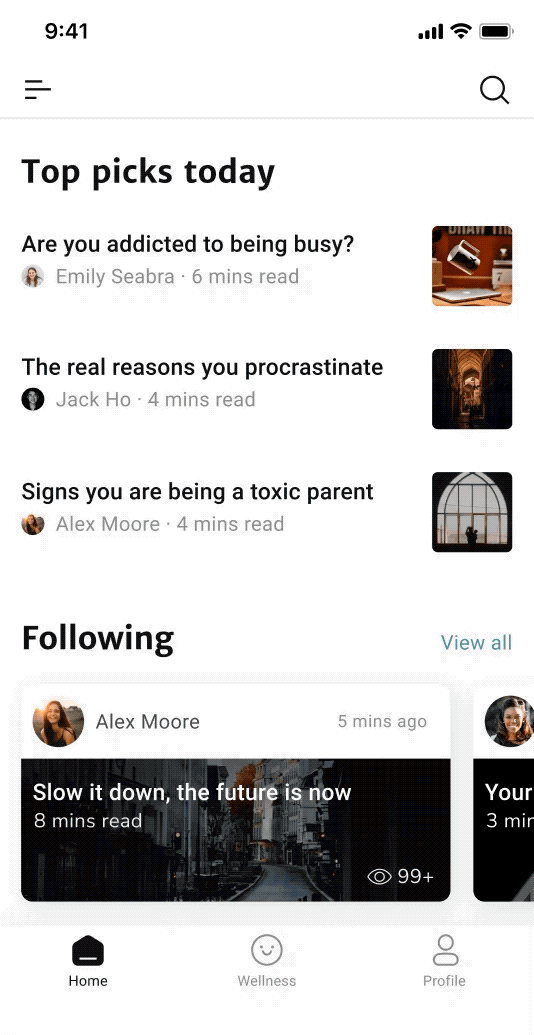
Research
3 / 6
of the interviewees have never reached out for professional help

2 / 3
who have reached out mentioned reading articles of related issues helped

Key Findings
- People don't like the association with mental health illness
- People who struggle tend to avoid cues that lead them to think they are depressed
Iterations
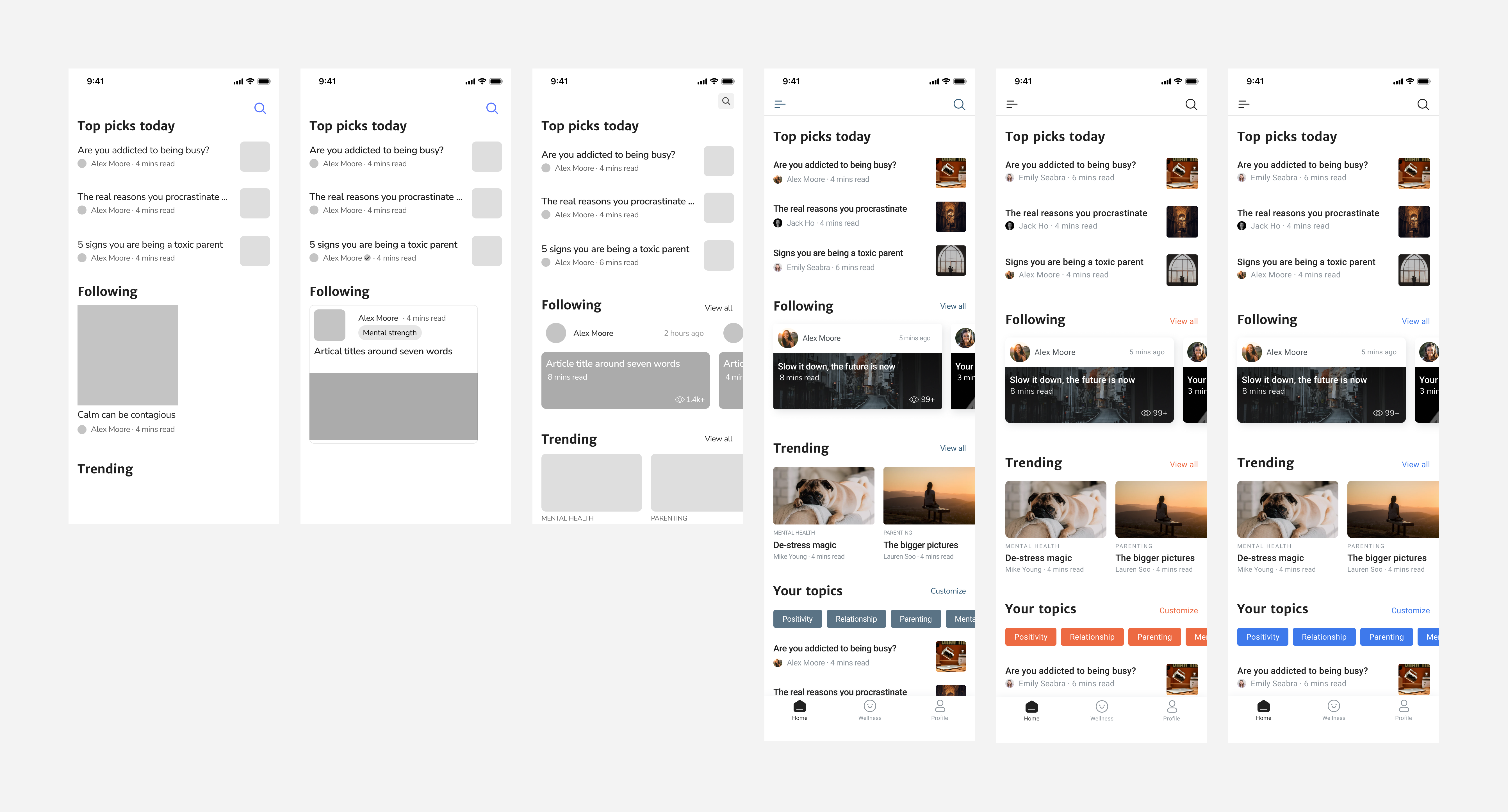
Decision 2
Display therapy resources on the author's profile, prioritizing appointment booking
The goal is to make users aware of the resources and be familiar with the mental health system through everyday use of the app, without making it seem exclusive for people who struggle. But when they are going through tough times, they will know exactly where to find help.
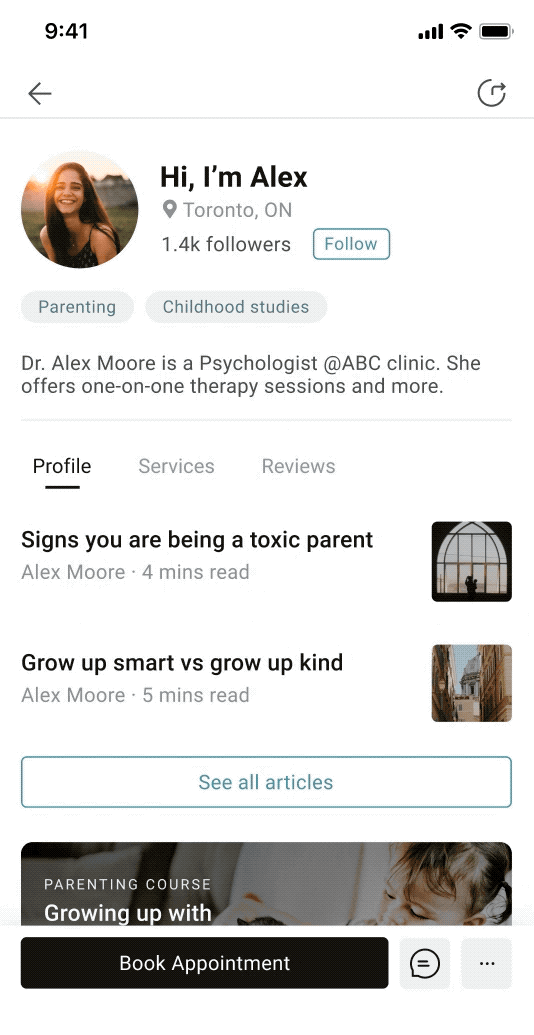
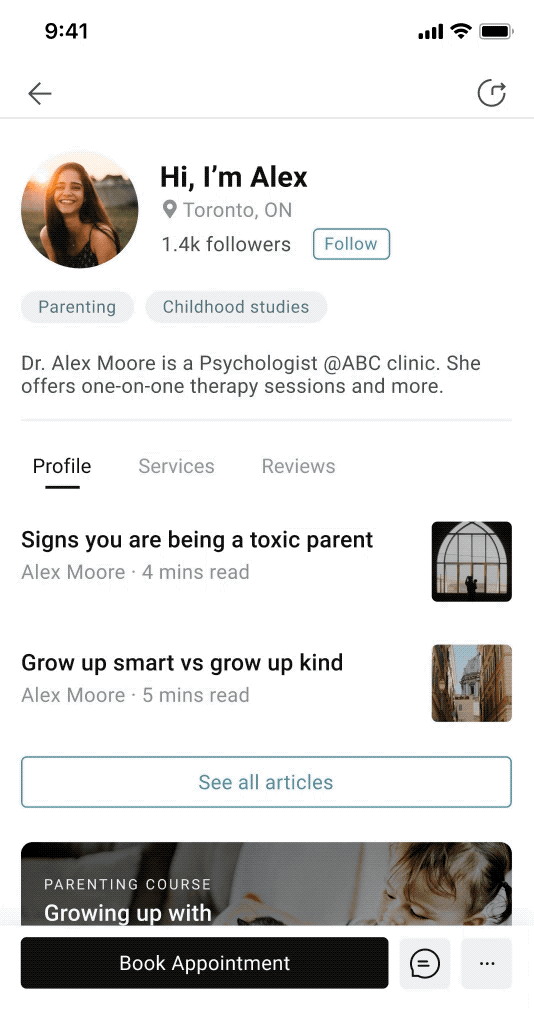
#2 "Shop" for therapists
- Normalize the concept of talking to therapists by making the services more accessible, affordable, and transparent.
- Provide a more flexible and private option through virtual consultations.
Research
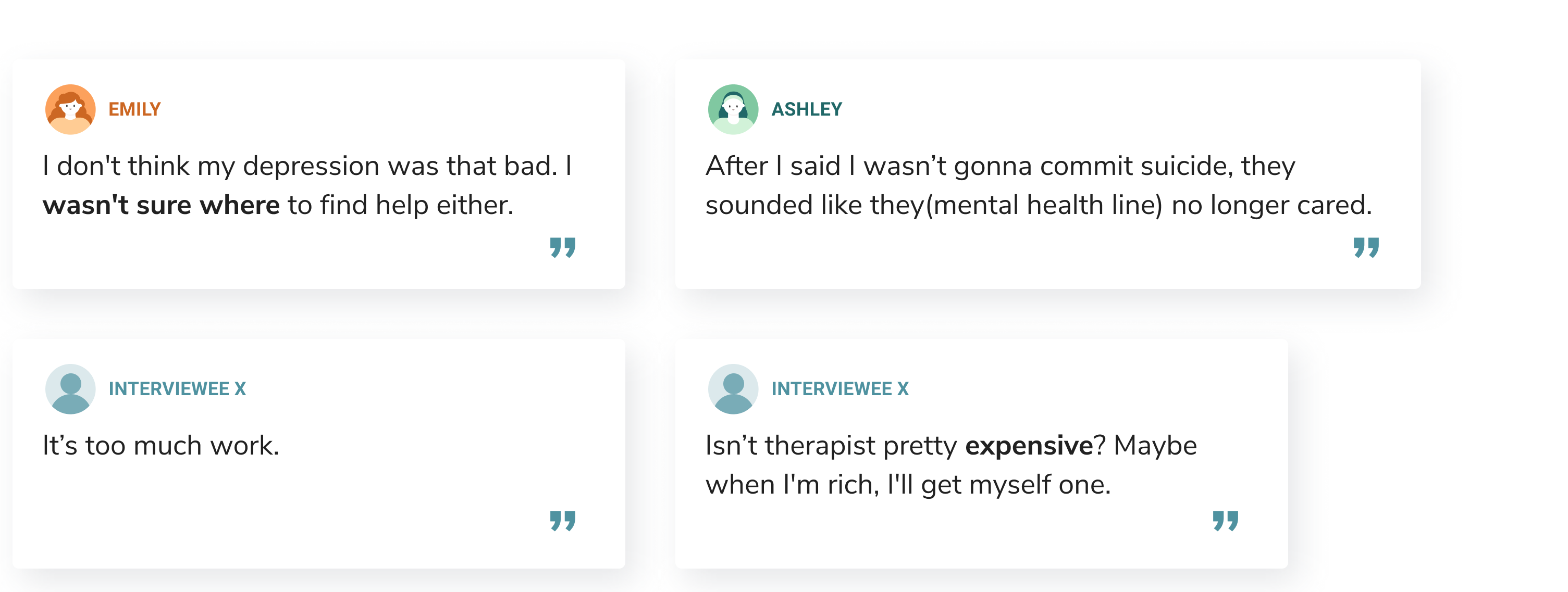
Key Findings
- A lot of the free resources only care about life-threatening situations
- Cost, uncertainty, and lack of knowledge are barriers that stop people from seeking help
Iterations
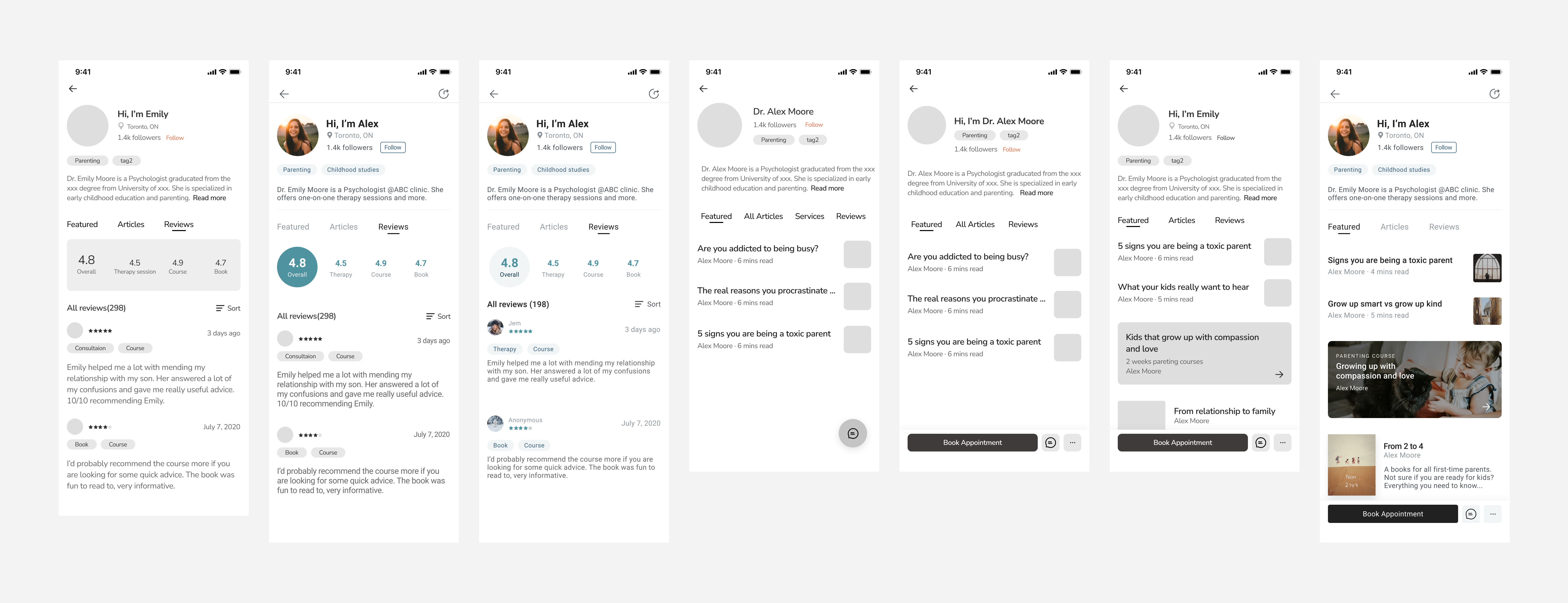
Decision 3
Building community through group activities that promote general wellbeing
All my interviewees mentioned the importance of companionship, but my research had also indicated depression is contagious. Intending to build a communication-based community could backfire.
#3 Building Community
- Provide companionship through positive activities such as group meditation and live yoga.
- Provide additional resources that focus on wellness.
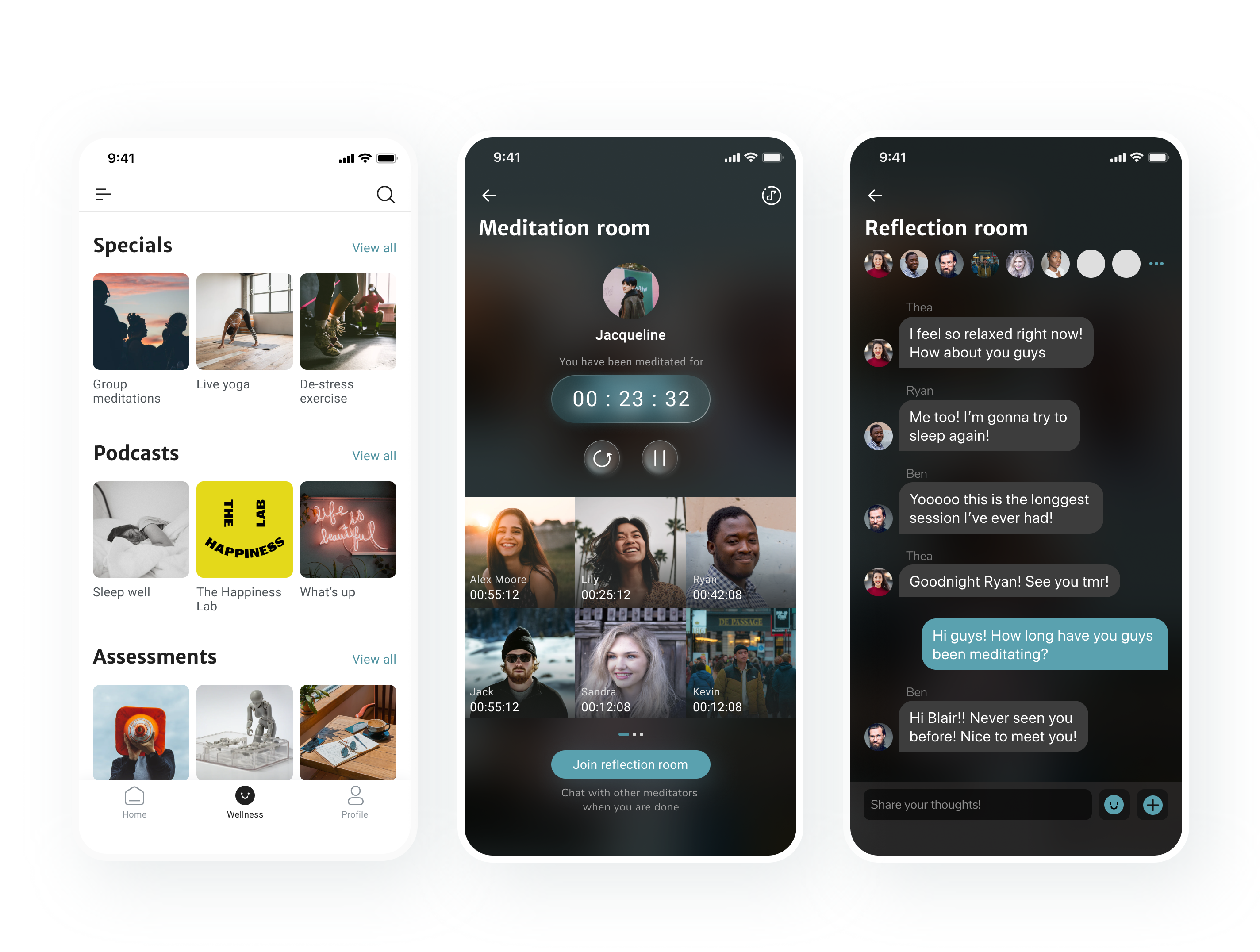
Research

A couple of my interviewees mentioned their therapists suggest them to do meditation and be more active. Meditation had also proven to have many health benefits includes reducing stress, releasing anxiety, etc.
Iterations

Decision 4
Use categories / tags to show content relevant to demographic and stage of life
When I asked the interviewees about the causes, I heard very different responses includes school, family, career, relationship, etc. Having different categories allows users to receive feeds most relevant to their situation.

# Onboarding
- Choose age, gender, and interests. Use a data-driven algorithm to show content and common questions based on demographics and stage of life.
Research
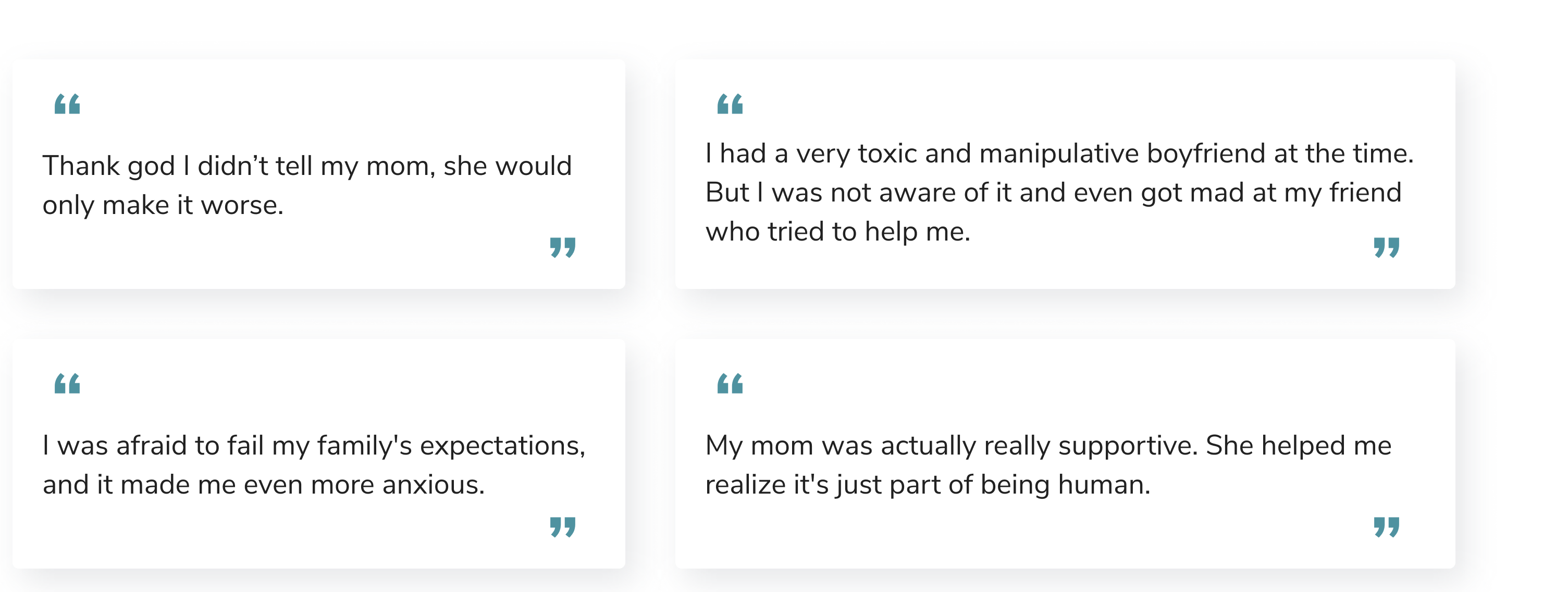
Additionally, this decision is also an attempt to address some of the fundamental causes of mental health issues, such as bad parenting. Articles under the parenting tags are aiming to teach users parenting psychology so that their kids can grow up in a healthy environment.
Design Process
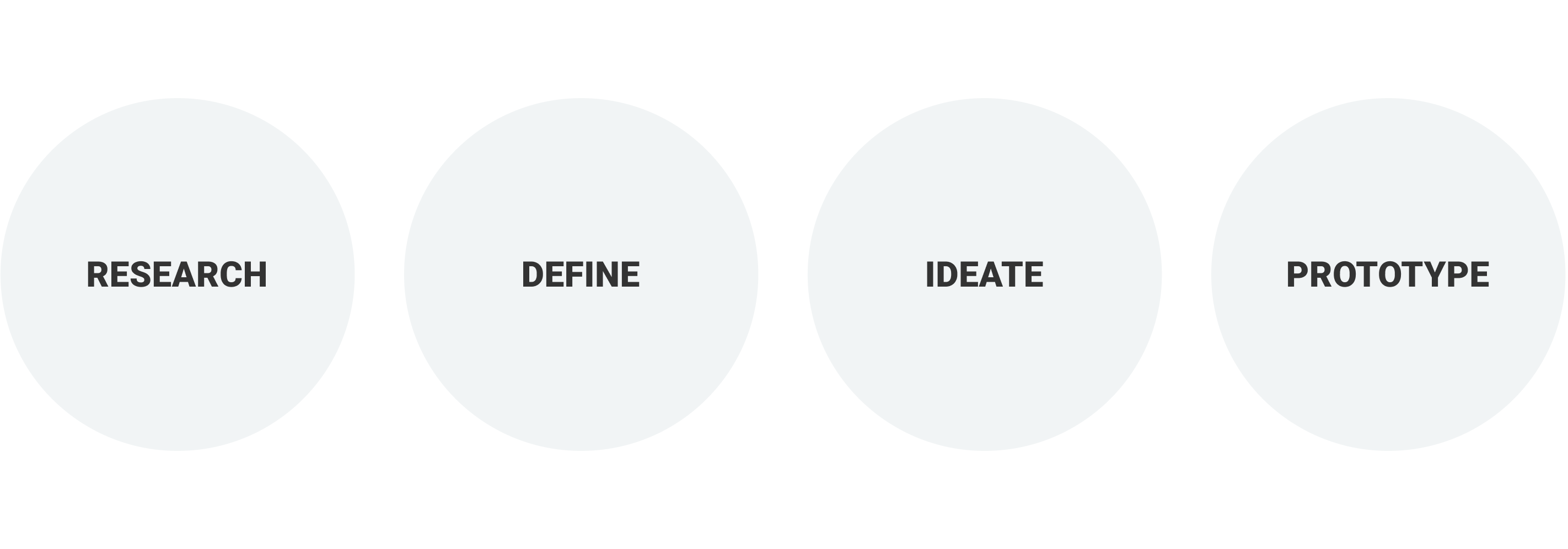
Primary Research
I conducted user interviews with 6 people who have suffered from or are currently going through mental health issues.
Research Goals
- In what situations our interviewees decide to seek help
- Factors that stop them from seeking help
- Factors/methods that help them with recovery
- Misperception about people who suffered from mental health issues
Understanding the Users
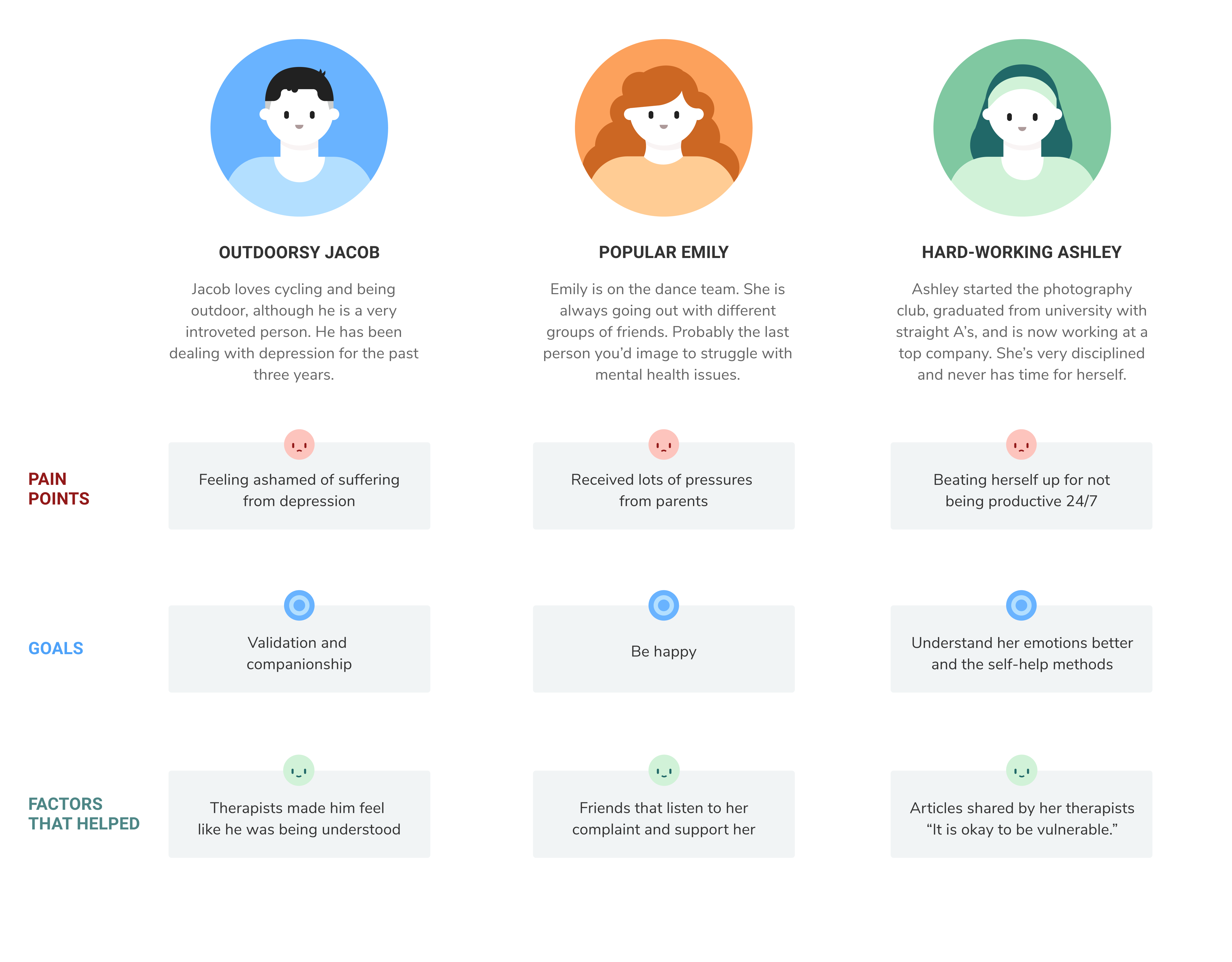
Key Pain Points
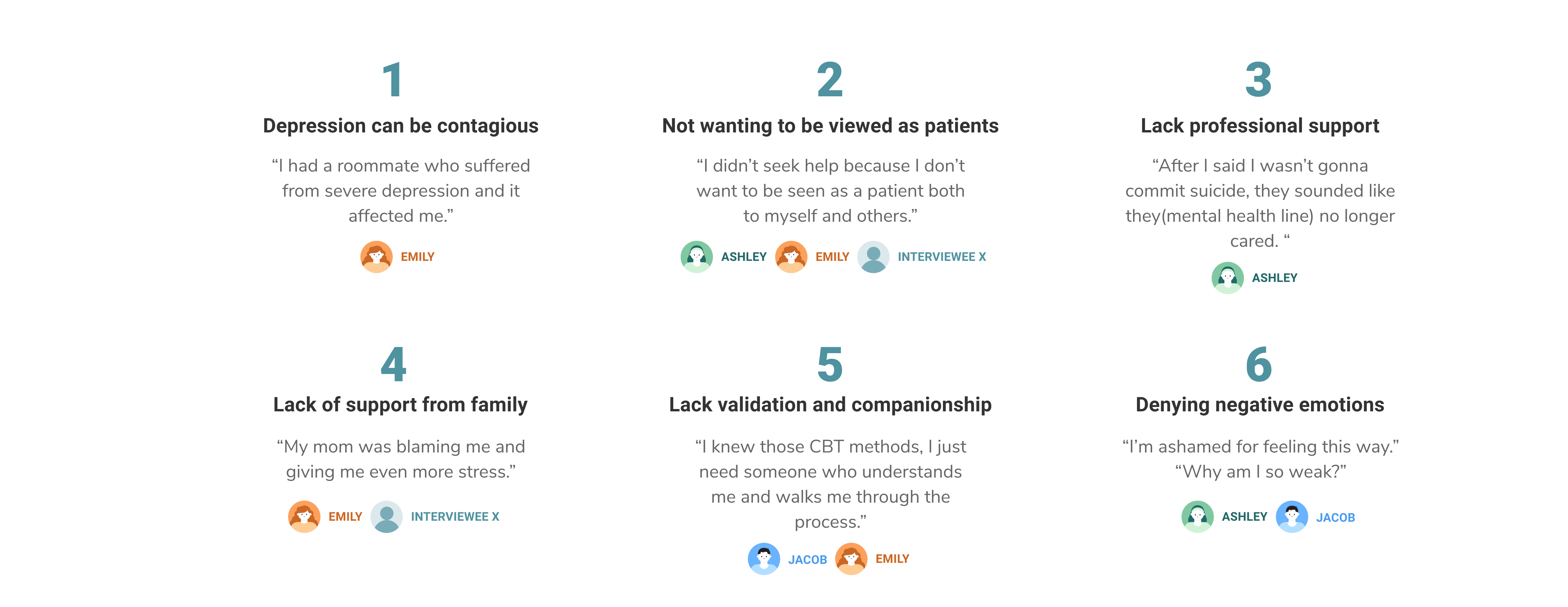
Define the Problem
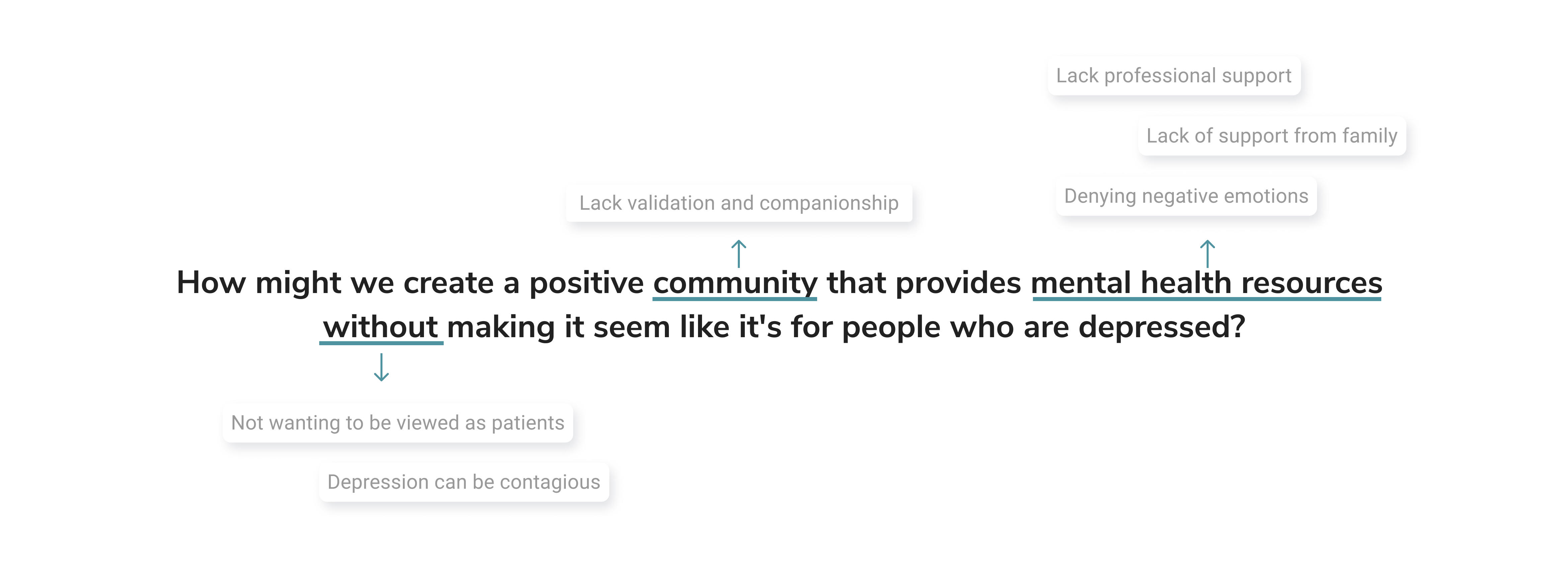
Target Users

Project Goals
- Improve the transparency and accessibility of mental health systems.
- Boost emotional wellbeing and mental health of the general public.
- Normalize the concept of talking to therapists.
Ideation
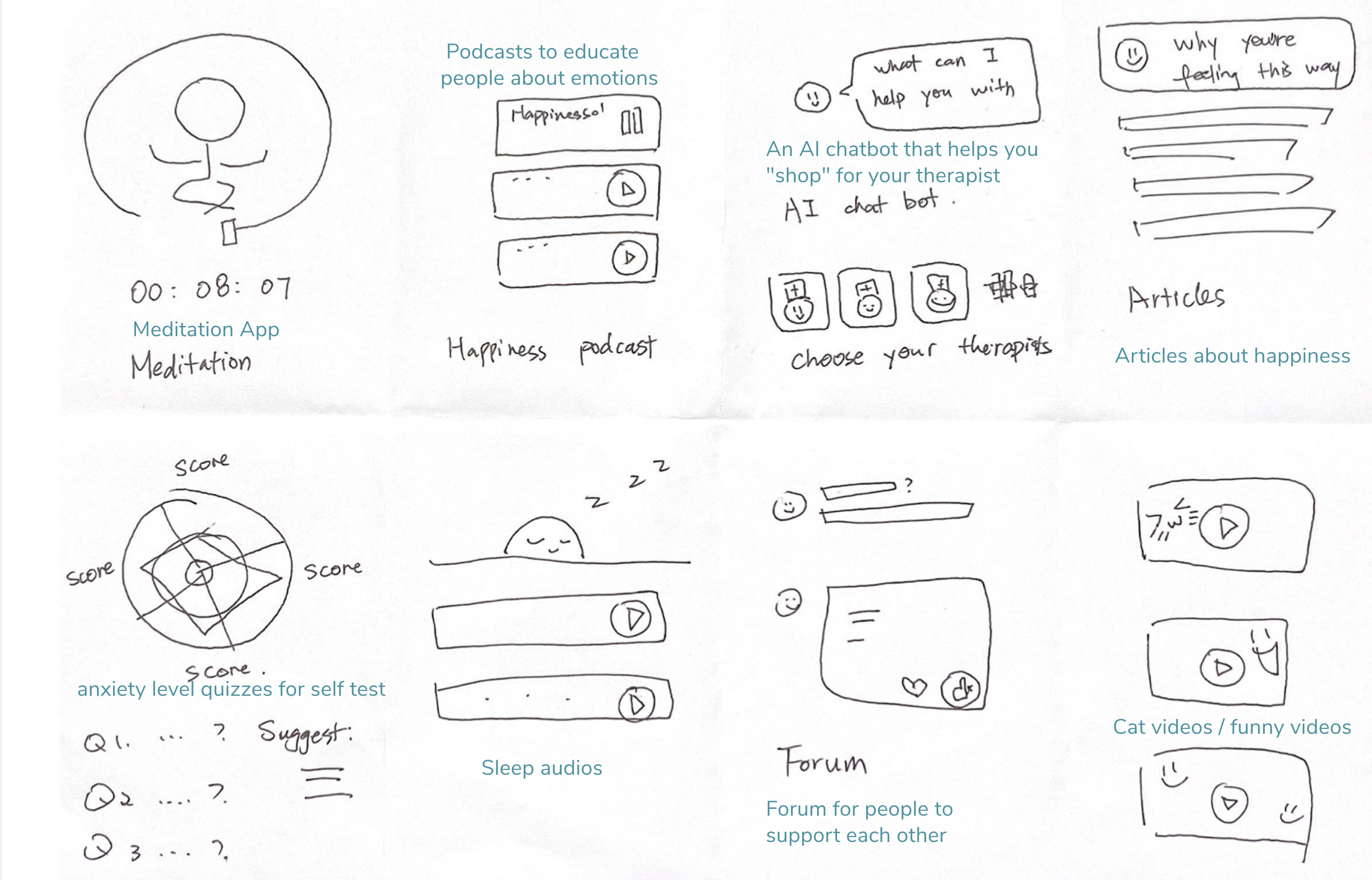
I then matched all the research results with the potential solutions to decide which ideas to keep.
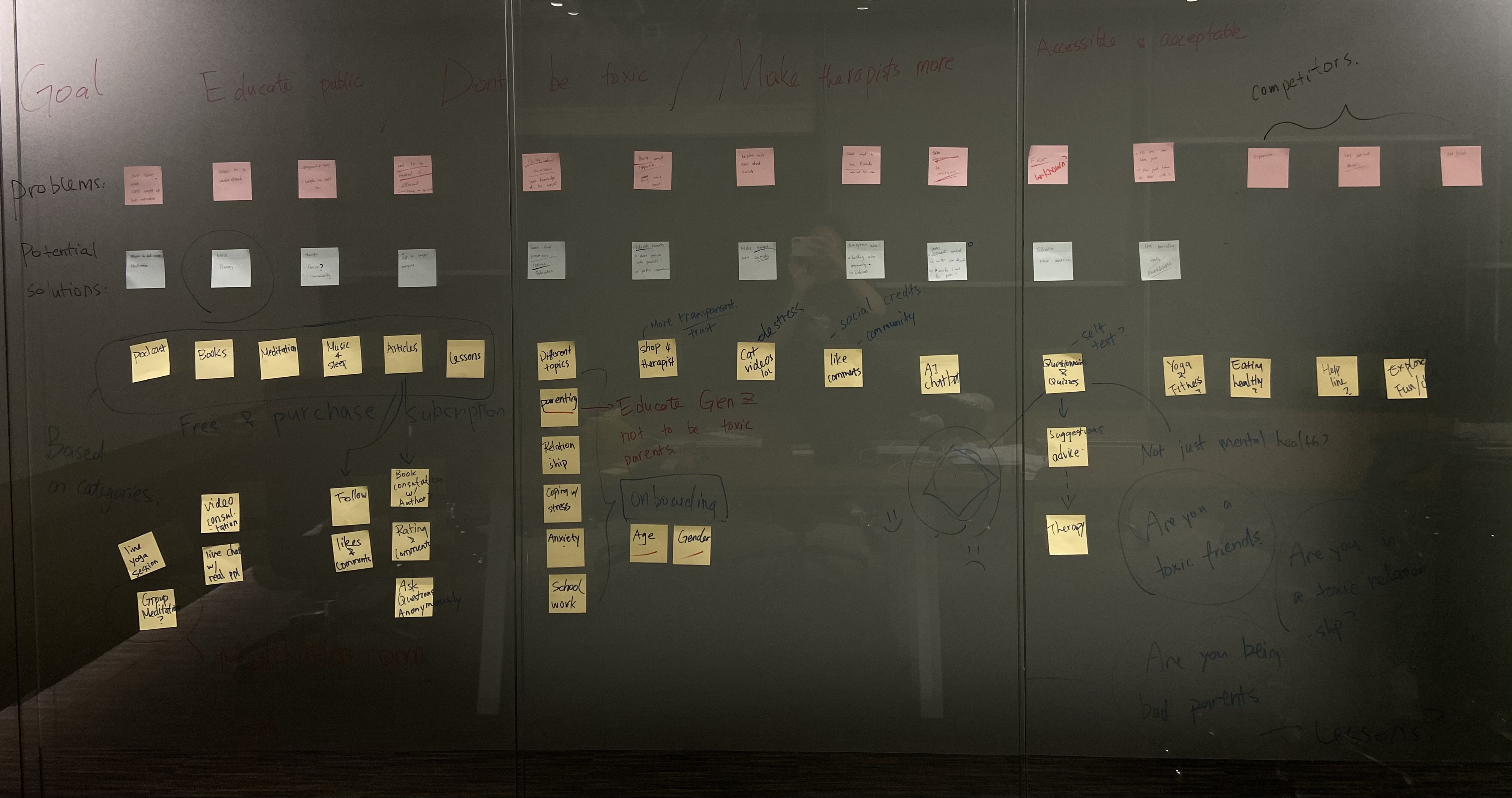
Revenue Streams
Competitive Analysis
My research shows that most mental-health-related apps on the markets are under the following three categories: meditation-based, CBT toolkits, and mood tracker/journal entry.
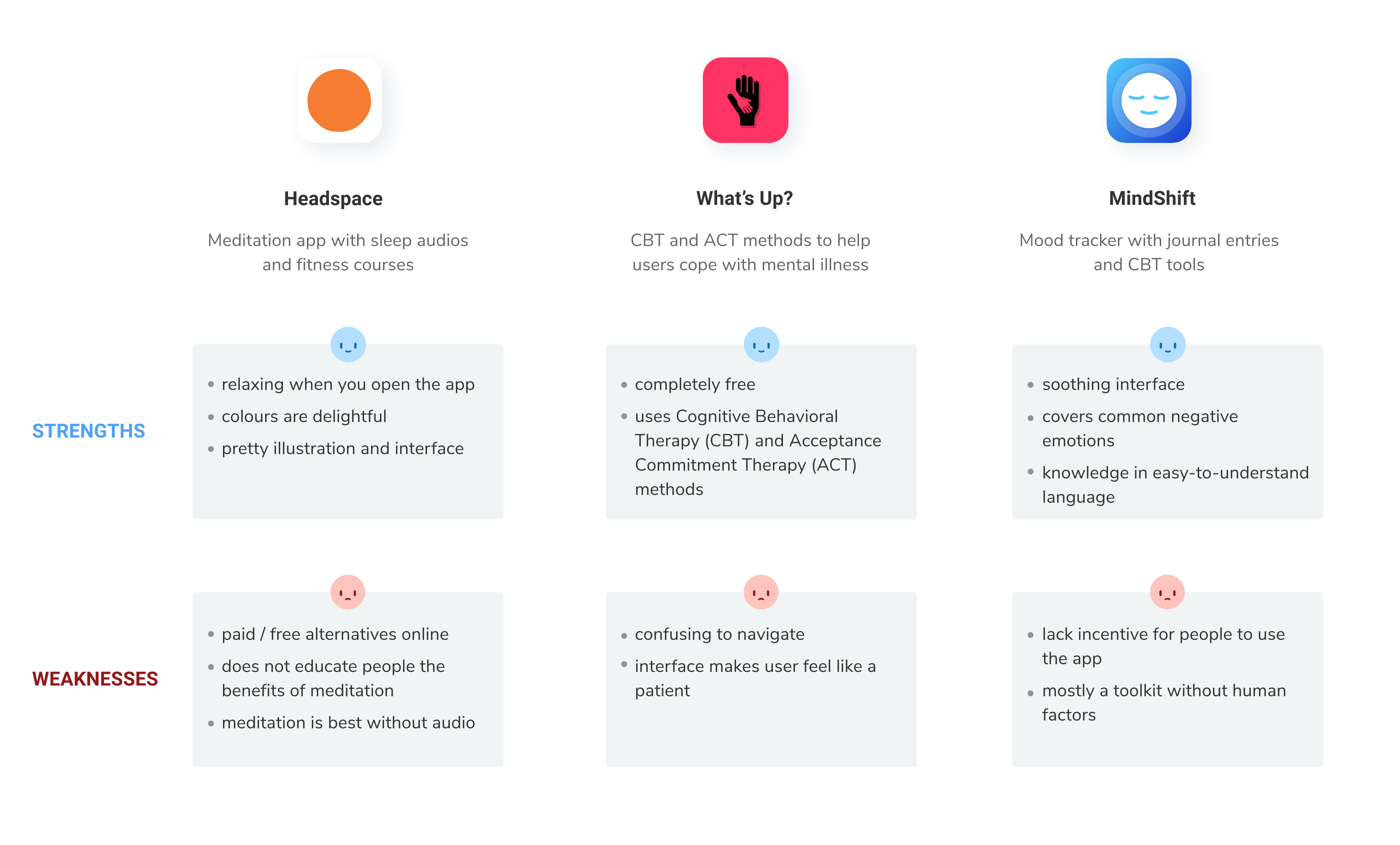
How might we find a balance of free content to attract and retain users but still generate revenue?
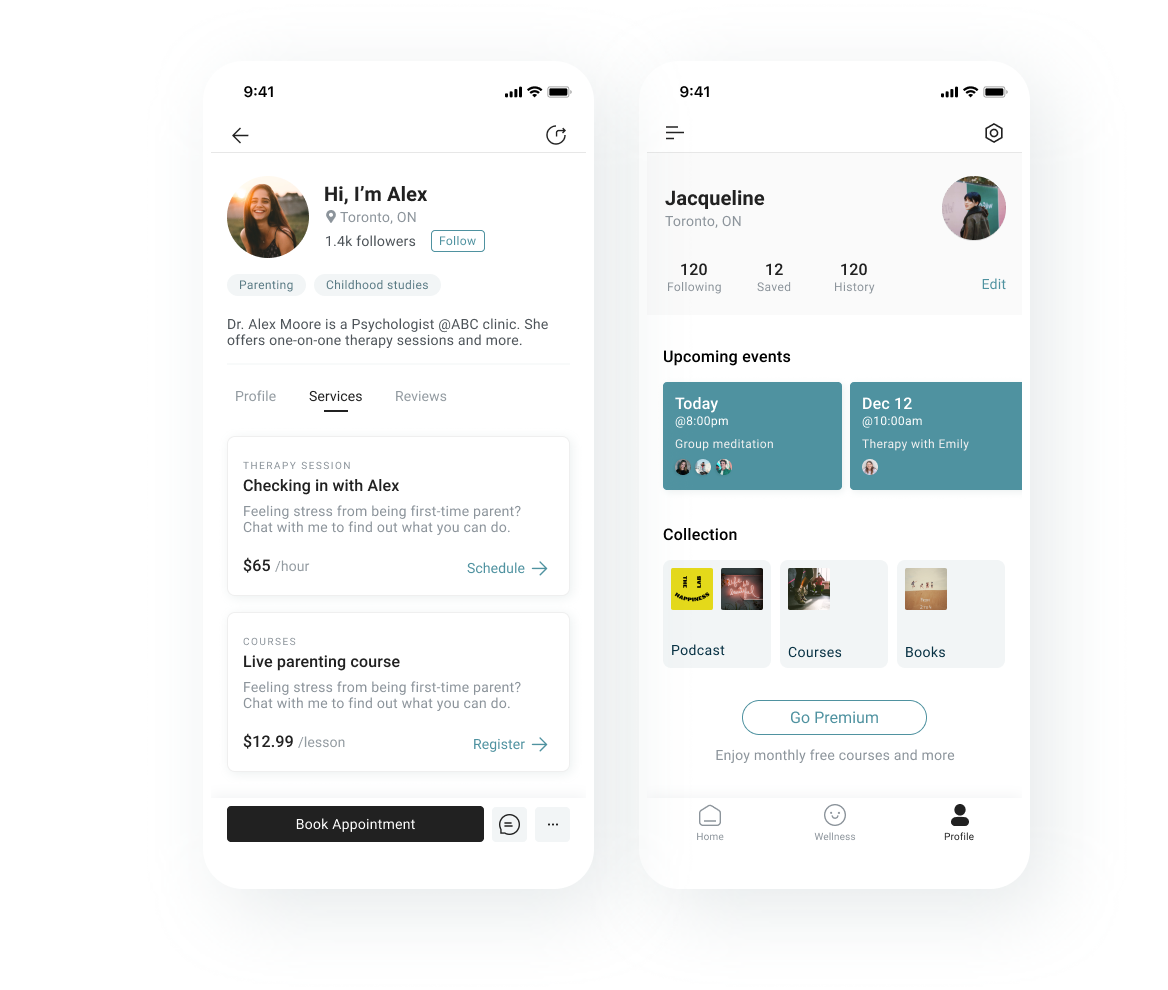
- Revenues from services performed
- Freemium business model
- Sponsored articles
Information Architecture

User Flow
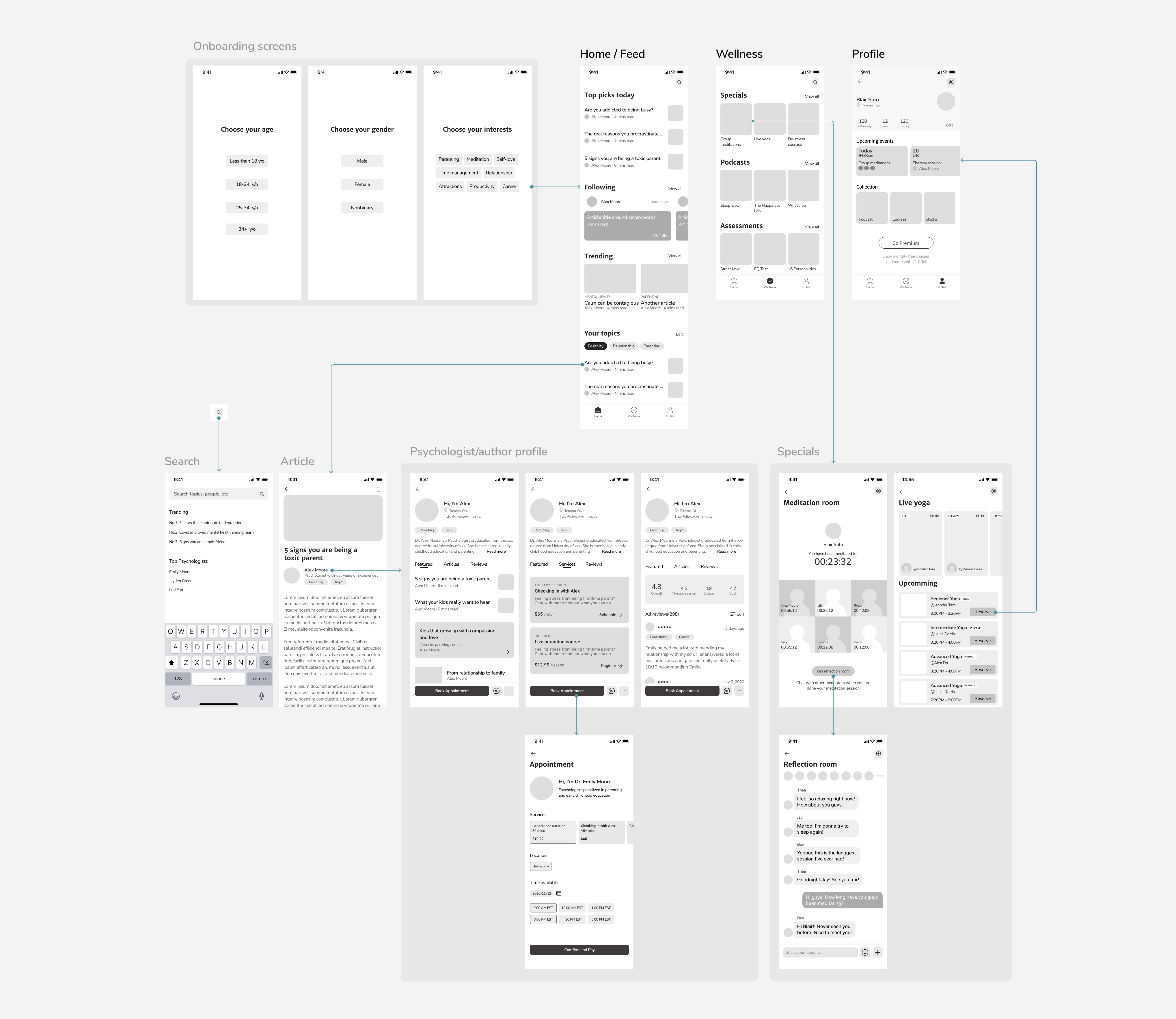
UI System
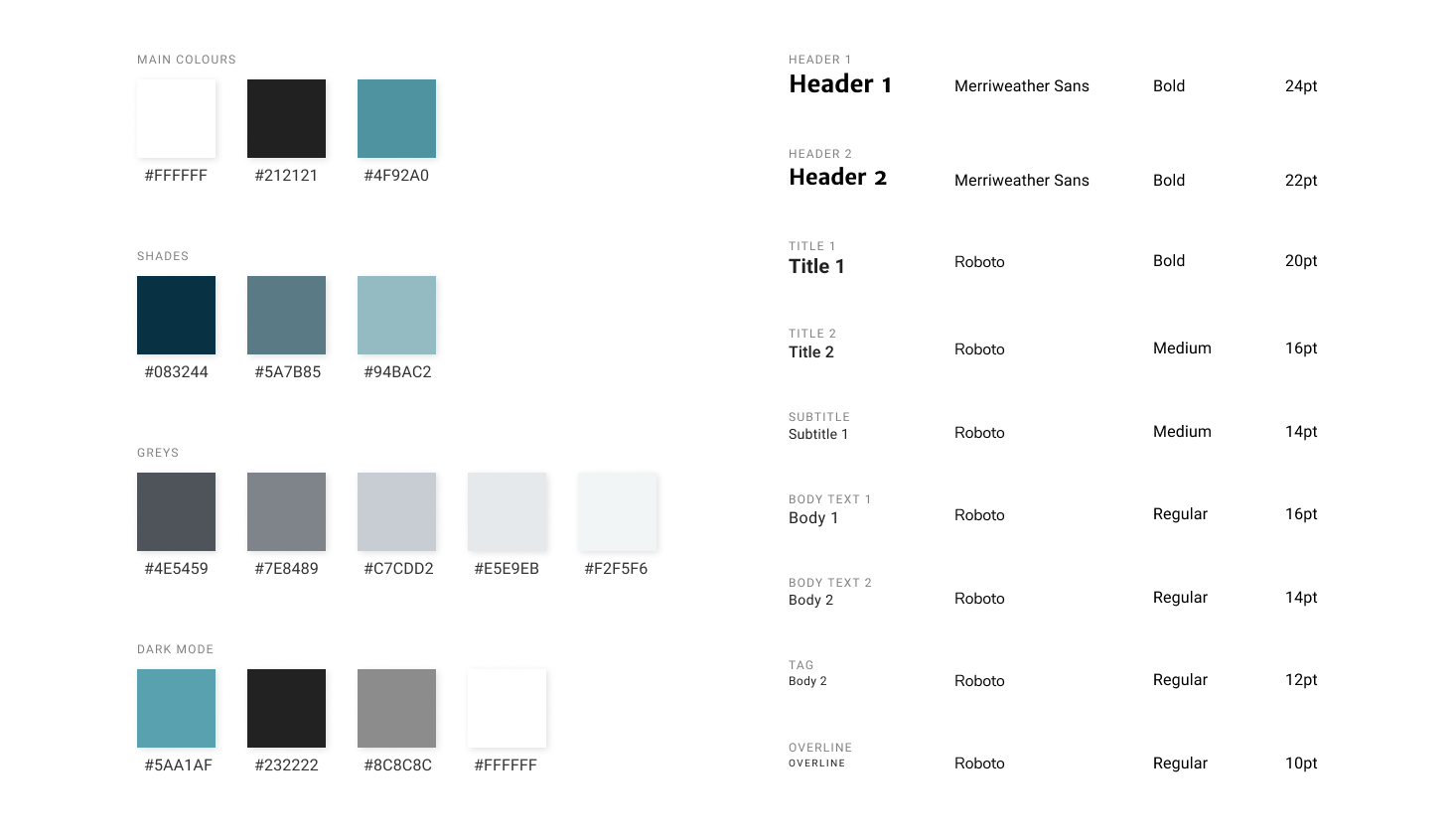
Next Step
If I were to continue this project, I would start by partnering with mental health clinics and associations. Then I would try to attract people to the platform through articles preview on different social media with interesting topics and redirect users to the platform.
As the ultimate goal of this project is to shift the way people view mental health and normalize the concept of talking to therapists, this would have to be a long term project to test if my solution is effective.
I would try to validate the solution by looking into the data of article views, authors' profile views, the number of people who contacted the therapists, and how the number changes over time.
Learnings and Takeaways
This project made me realize the importance of user research. Before this project, I thought of user interviews as a technical process that I'm required to do for a complete UX case study. But while I was interviewing my users, I heard a lot of stories that completely change the ways I see this issue.
At one point it stopped feeling like I was interviewing them, rather them educating me on the issues. I also found that I became closer with a few of my interviewees after the 30 minutes phone call, that I continue to talk with them for the following weeks. I shared my thinking process with them and I was able to get immediate feedback for each solution I came up with.
I felt confident about my solution when a few of them said they would actually use it or they were already using these resources but through multiple sources.